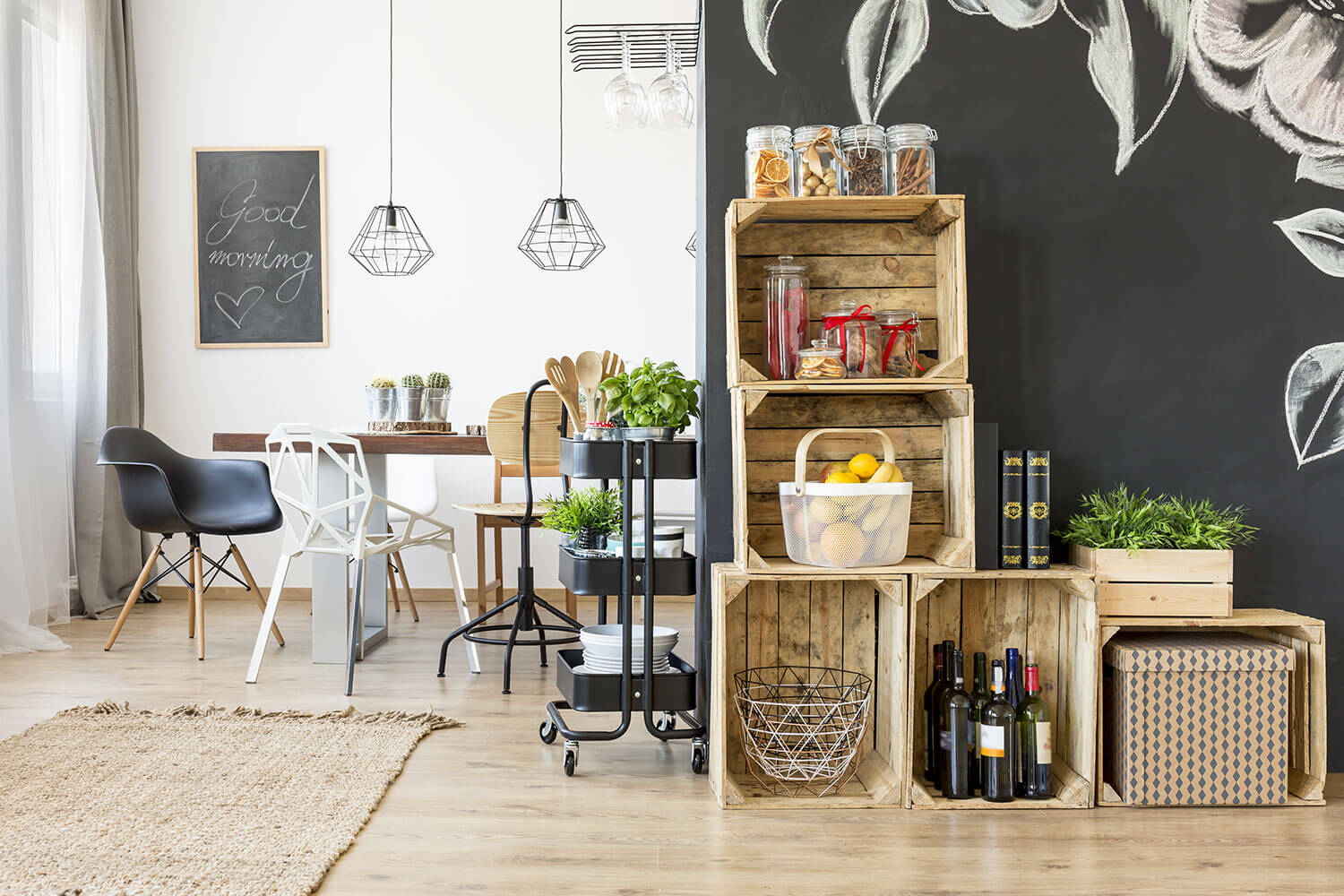“Decorating Your Home with a Conscience: A Guide to Eco-Friendly Home Decor
Artikel Terkait Decorating Your Home with a Conscience: A Guide to Eco-Friendly Home Decor
- Making The Most Of Your Cozy Nest: Decorating For Small Families
- The Comforting Embrace Of Warm Minimalism: A Guide To Creating A Sanctuary
- Embrace The Beautiful Chaos: A Deep Dive Into Modern Maximalist Decor
- From Blank Canvas To Cozy Home: A Comprehensive Guide To Decorating Your First House
- Illuminating Ambience: A Comprehensive Guide To Decorative Lighting
Table of Content
Video tentang Decorating Your Home with a Conscience: A Guide to Eco-Friendly Home Decor
Decorating Your Home with a Conscience: A Guide to Eco-Friendly Home Decor

In an era increasingly conscious of its environmental impact, the choices we make in decorating our homes can have a significant effect. Moving beyond fleeting trends and embracing eco-friendly home decor is not just about aesthetics; it’s about creating a healthier living space for ourselves and contributing to a more sustainable future. This guide delves into the world of eco-friendly home decor, offering practical tips, inspiring ideas, and valuable resources to help you transform your house into a haven that’s both beautiful and environmentally responsible.
What is Eco-Friendly Home Decor?
Eco-friendly home decor encompasses a range of practices and product choices designed to minimize environmental harm. It prioritizes the use of sustainable materials, reduces waste, conserves energy, and promotes ethical production. This approach considers the entire lifecycle of a product, from its sourcing and manufacturing to its use and eventual disposal.
Key Principles of Eco-Friendly Home Decor:
- Sustainable Materials: Choosing materials that are renewable, recycled, or responsibly sourced.
- Reduced Waste: Minimizing consumption, repurposing existing items, and opting for products with minimal packaging.
- Energy Efficiency: Utilizing energy-saving appliances, lighting, and insulation.
- Non-Toxic Products: Avoiding materials and finishes that release harmful chemicals into the air.
- Ethical Production: Supporting companies that prioritize fair labor practices and environmentally responsible manufacturing.

Sustainable Materials: The Foundation of Eco-Friendly Decor
The materials you choose form the backbone of your eco-friendly decor. Here are some excellent options to consider:
- Bamboo: A rapidly renewable resource, bamboo is incredibly versatile and can be used for flooring, furniture, blinds, and even textiles. Its fast growth rate and minimal need for pesticides make it a highly sustainable choice.
- Reclaimed Wood: Giving new life to salvaged wood from old buildings, barns, or even fallen trees is a fantastic way to reduce waste and add character to your home. Reclaimed wood offers a unique aesthetic and tells a story.
- Recycled Glass: Recycled glass can be transformed into beautiful countertops, tiles, and decorative accents. It reduces the demand for new glass production and diverts waste from landfills.
- Organic Cotton, Linen, and Hemp: These natural fibers are grown without harmful pesticides and herbicides, making them a healthier and more sustainable choice for bedding, curtains, upholstery, and rugs. Look for certifications like GOTS (Global Organic Textile Standard) to ensure authenticity.
- Cork: Harvested from the bark of cork oak trees without harming the tree, cork is a renewable and biodegradable material. It’s naturally water-resistant, fire-retardant, and provides excellent insulation, making it ideal for flooring, wall coverings, and even furniture.
- Wool: A natural and renewable fiber, wool is durable, breathable, and biodegradable. Choose wool from ethically sourced farms that practice responsible land management.
- Linoleum: Made from natural materials like linseed oil, cork dust, wood flour, and rosin, linoleum is a durable and sustainable flooring option that is naturally antibacterial and easy to maintain.


Reducing Waste: Embracing Minimalism and Repurposing
One of the most impactful ways to make your home decor eco-friendly is to reduce waste. This involves conscious consumption, creative repurposing, and thoughtful disposal:
- Declutter and Donate: Before buying anything new, take stock of what you already own. Declutter your space by donating unwanted items to charity or selling them online.
- Buy Secondhand: Explore thrift stores, antique shops, and online marketplaces for unique and affordable furniture, decor, and accessories. Buying secondhand reduces the demand for new products and gives existing items a new lease on life.
- Repurpose and Upcycle: Get creative and transform old items into something new. Turn old ladders into bookshelves, mason jars into vases, or old t-shirts into reusable shopping bags.
- Choose Durable and Timeless Pieces: Invest in high-quality, durable furniture and decor that will last for years to come. Avoid trendy items that will quickly fall out of style and end up in landfills.
- Minimize Packaging: Opt for products with minimal or recyclable packaging. Choose brands that prioritize sustainable packaging materials.
- Properly Dispose of Old Items: When you need to dispose of old furniture or decor, explore recycling options or donate them to organizations that can repurpose them.
Energy Efficiency: Lighting, Appliances, and Insulation
Reducing energy consumption is crucial for creating an eco-friendly home. Here are some ways to improve energy efficiency:
- Energy-Efficient Lighting: Replace incandescent light bulbs with LED bulbs, which use significantly less energy and last much longer.
- Energy-Star Appliances: When purchasing new appliances, look for the Energy Star label. These appliances meet strict energy efficiency guidelines and can save you money on your energy bills.
- Proper Insulation: Ensure your home is properly insulated to reduce heat loss in the winter and heat gain in the summer. This will lower your heating and cooling costs.
- Smart Thermostat: Install a smart thermostat that can automatically adjust the temperature based on your schedule and preferences.
- Unplug Electronics: Unplug electronics when they are not in use, as they can still draw power even when turned off.
- Use Natural Light: Maximize natural light by opening curtains and blinds during the day.
Non-Toxic Products: Creating a Healthier Indoor Environment
Many conventional home decor products contain harmful chemicals that can pollute your indoor air. Choosing non-toxic alternatives is essential for creating a healthy living space:
- Low-VOC Paints and Finishes: Volatile organic compounds (VOCs) are chemicals that can be released into the air from paints, varnishes, and adhesives. Choose low-VOC or VOC-free options.
- Natural Cleaning Products: Replace harsh chemical cleaners with natural alternatives made from ingredients like vinegar, baking soda, and essential oils.
- Organic Mattresses and Bedding: Conventional mattresses and bedding can contain harmful chemicals like flame retardants and formaldehyde. Opt for organic mattresses and bedding made from natural materials like organic cotton, wool, and latex.
- Avoid Flame Retardants: Flame retardants are often added to furniture and textiles to make them less flammable. However, these chemicals can be harmful to human health. Look for furniture and textiles that are labeled as flame retardant-free.
- Air Purifiers: Consider using an air purifier to remove pollutants and allergens from your indoor air.
Ethical Production: Supporting Fair Labor Practices
Eco-friendly home decor extends beyond environmental concerns to encompass ethical production. Supporting companies that prioritize fair labor practices ensures that the products you buy are made in a responsible and humane way:
- Research Brands: Before making a purchase, research the company’s ethical and environmental practices.
- Look for Certifications: Look for certifications like Fair Trade, which guarantees that workers are paid fair wages and work in safe conditions.
- Support Local Artisans: Buying from local artisans and craftspeople supports local economies and ensures that products are made with care and attention to detail.
- Be a Conscious Consumer: Ask questions about the origin and production of the products you buy.
Inspiration and Ideas for Eco-Friendly Home Decor:
- Biophilic Design: Incorporate natural elements into your home decor, such as plants, natural light, and natural materials. This can help to create a calming and restorative environment.
- Minimalist Decor: Embrace a minimalist aesthetic by decluttering your space and focusing on essential items. This can help to reduce consumption and create a more peaceful environment.
- Rustic Charm: Use reclaimed wood, natural textures, and earthy tones to create a rustic and inviting atmosphere.
- Bohemian Style: Incorporate vintage furniture, natural textiles, and handmade crafts to create a bohemian-inspired space.
- Coastal Decor: Use natural materials like seagrass, bamboo, and driftwood to create a coastal-inspired space.
FAQ: Eco-Friendly Home Decor
Q: Is eco-friendly home decor more expensive?
A: While some eco-friendly products may have a higher initial cost, they often last longer and can save you money in the long run through reduced energy consumption and waste. Buying secondhand, repurposing items, and DIY projects can also help to keep costs down.
Q: Where can I find eco-friendly home decor products?
A: Many retailers now offer eco-friendly home decor products. Look for online retailers specializing in sustainable goods, as well as local shops and artisans.
Q: How can I tell if a product is truly eco-friendly?
A: Look for certifications like GOTS (Global Organic Textile Standard), FSC (Forest Stewardship Council), and Fair Trade. Research the company’s environmental and ethical practices.
Q: I’m on a tight budget. Can I still incorporate eco-friendly elements?
A: Absolutely! Focus on small changes like switching to LED bulbs, using natural cleaning products, and repurposing existing items. Thrifting and DIY projects are also budget-friendly ways to embrace eco-conscious decorating.
Q: What are some easy ways to get started with eco-friendly decor?
A: Start by decluttering and donating unwanted items. Then, focus on replacing conventional cleaning products with natural alternatives and switching to LED light bulbs.
Conclusion: Creating a Sustainable and Beautiful Home
Embracing eco-friendly home decor is a journey, not a destination. It’s about making conscious choices that minimize your environmental impact and create a healthier living space for yourself and your family. By incorporating sustainable materials, reducing waste, improving energy efficiency, using non-toxic products, and supporting ethical production, you can transform your house into a haven that’s both beautiful and environmentally responsible. Remember that every small step makes a difference, and together, we can create a more sustainable future, one room at a time.
